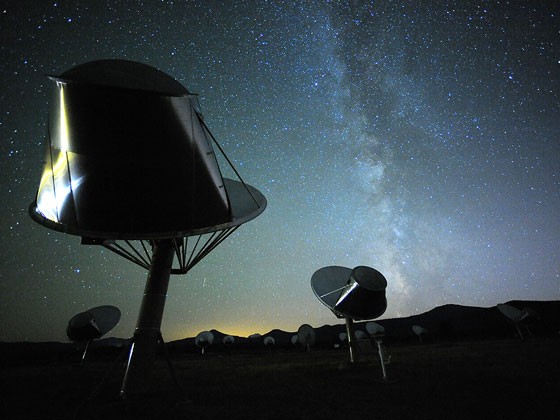New observations from a strange, distant star could reveal possible signals from advanced alien civilizations and since there has been no known alien contact yet, scientists believe that aliens are not sending enough strong signals for humans to detect on Earth.
Last October the star called as KIC 8462852 apparently showed signs of odd behavior where it has been periodically dimming by about 20 percent as scientists theorize that this could be a shadow of an alien megastructure.
However, new observations from the SETI (Search for Extraterrestrial Intelligence) Institute in California reveal that there is still no radio signals from that star that could indicate aliens who are trying to communicate with us.
According to SETI Institute astronomer Seth Shostak, astronomical history already tells us that every time that there is an event similar to this, this has been linked to extraterrestrial life and it has always been wrong, but since this star is emitting strange behavior and patterns, it's most likely that it is caused by nature and not aliens, and it's only logical to investigate.
These distant stars are detected by the Kepler Space Telescope where scientists look for irregular patterns or dimming in the stars' brightness that could indicate when orbiting planets pass in front of their host stars. However, KIC 8462852 revealed patterns that are very peculiar which are not the regular dimming found by Kepler in an orbiting planet.
Scientists thought of theories involving a swarm of comets that was orbiting a star some 1,400 light years away from Earth however, many extraterrestrial life enthusiasts believe that this odd star could host a swarm of alien megastructures with highly advanced civilizations.
The SETI Institute then observed KIC 8462852 with the Allen Telescope Array for a period of two weeks using two types of radio signals. Narrowband signals which SETI has been searching for usually, are considered clues for alien life that can be used as "hailing signals". Broadband signals can also originate from alien spacecraft that is orbiting the planet or around the star.
According to SETI Institute scientist Gerry Harp, this is the first time that SETI used the Allen Telescope Array to search for wide band signals which are generally not considered before during searches.
However, SETI released their results on Thursday, November 5, stating that there is no clear evidence of any type of signal coming from the star KIC 8462852. Researchers did not detect any minimum amount of energy to broadcast these signals which is 100 times the total amount of energy used on Earth for narrowband signals and 10 million times greater for broadband signals.
These findings still do not eliminate the possibility of alien communications from that star region however those signals are weaker than the signals that SETI would need to detect due to limitations of distance between Earth and the star.
SETI will continue their observations however, if there is indeed an advanced alien civilization out there, it seems like its inhabitants have no desire communicating directly to our planet.






















